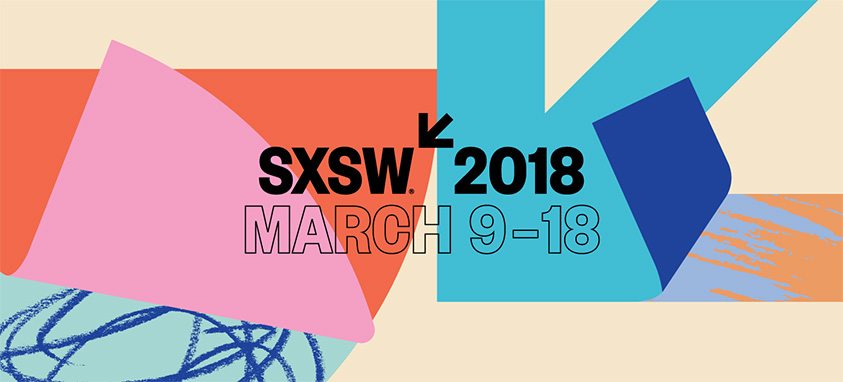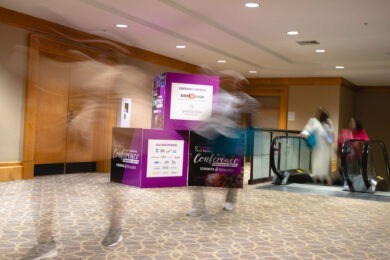SXSW Conference and Festivals is an event-planning wonder, considering its success and steady growth since 1987, when only 700 people registered. Now, almost a half-million people participate, and they are scattered throughout Austin, Texas, for 10 days in March.
In 2017, SWSW had a groundbreaking economic impact of $348.6 million. Executive Director Mike Shea, who has been behind planning the event for the last 29 years, discussed how he keeps running it so flawlessly year after year.
Cross Your T’s and Dot Your I’s
With so much happening at once, in many different areas, one challenge is to decide what to focus on. According to Shea, it’s all about the details. “If you don’t keep all the details under control, they turn into a mistake, and then a mistake turns into a problem,” he says.
A Good Team Always Has Your Back
With a staff of 200 and many eager volunteers, Shea depends heavily on the support of his co-workers to make sure everything goes according to plans.
“A big thing is hiring good people,” he says. “That is a huge part of it. I think of myself as someone who leads from behind, and I’m able to do that because I hire good people in the first place—and then I just get out of the way.”
SXSW is known for conference and festivals that celebrate the convergence of the interactive, film and music industries. However, as SWSW has grown each year, it has become an essential destination for global professionals, featuring sessions, showcases, screenings, exhibitions and a variety of networking opportunities. Attendees get to explore what’s next in the worlds of film, culture, music and technology—with opportunities for networking and learning—in one unified conference that includes 24 tracks (or topics), plus the SXSW Eco curated Cities Summit.
Plan Ahead, but Be Easy
Prioritizing in advance is huge for Shea and his team. It allows them to keep track of what needs to be done before opening day. Once the festival has started, Shea and his team meet every morning to go over the day’s resume (what he calls “Bible study”).
“It’s basically a run-of-show,” he says. “I guess, in a phrase, what we do every morning is set the stage, know what our marching orders are for the day, where we need to be and what is the most important thing to do.”
But not everything goes as planned, so Shea and his team must be flexible.
“There are always going to be some things that you never get around to fully buttoning down, so they might turn into surprises on site,” he says. “I encourage my staff to bend, but not to break. If something goes wrong, and you let the situation overwhelm you rather than dealing with it and addressing it yourself, then you are going to break.”
The conference has 13 keynote speakers and several featured speakers within each track. There is a separate gaming conference and a comedy festival. Last year, almost 7,000 different events were featured, as well as hundreds of after-parties and performances each night around the city. All ran smoothly.
If It Ain’t Broke, Look for Improvements
After three decades, Shea recognizes what does and doesn’t work. “Whenever possible, we like to wash, rinse and repeat,” he says. “So, we aren’t inventing new things every year.”
Each year, something need to be improved, though. This year, Shea and his team’s focus is “to address attendee access, especially in the conference areas.” When there is a popular speaker or event, such as in 2016, when then-President Barack Obama gave a keynote speech, not everyone can gain admission. Lines become long, and people might spend an hour waiting in line for a session they ultimately can’t get into.
This year, SXSW is trying to avoid that by using electronic status boards to inform people about availability at each session. The boards are color coded, with red meaning full, yellow indicating filling up quickly and green signifying there is plenty of room left.
“Basically, in every one of our major conference rooms, we will have someone reporting the crowd size,” Shea says. They will indicate whether the room is full, there’s some room available or there’s plenty of room left. That information will be conveyed on the status boards located all around the conference, and will be available on the SXSW GO app.
SXSW GO is the official mobile app of the festival, which allows attendees to browse each day’s lineup, see where sessions are being held, and create their own personal schedule.
For the Love of the Game
Shea has been planning the event for almost 30 years, and doesn’t plan to stop anytime soon. It’s rewarding each year, but it’s a reward that can’t been seen or held—but rather, felt.
“At the end of the day, you look at what happened and you think, ‘I was part of building of that,’” he says. “There were tens of thousands of people who came here and had an amazing experience. They found a collaborator or a job, or might have just discovered a great new band, or might have been inspired by a keynote speaker. Just knowing that you were part of something that is potentially life-changing for tens of thousands of people is a huge reward right there.”
SXSW will be held March 9–18, and tickets are available online.




